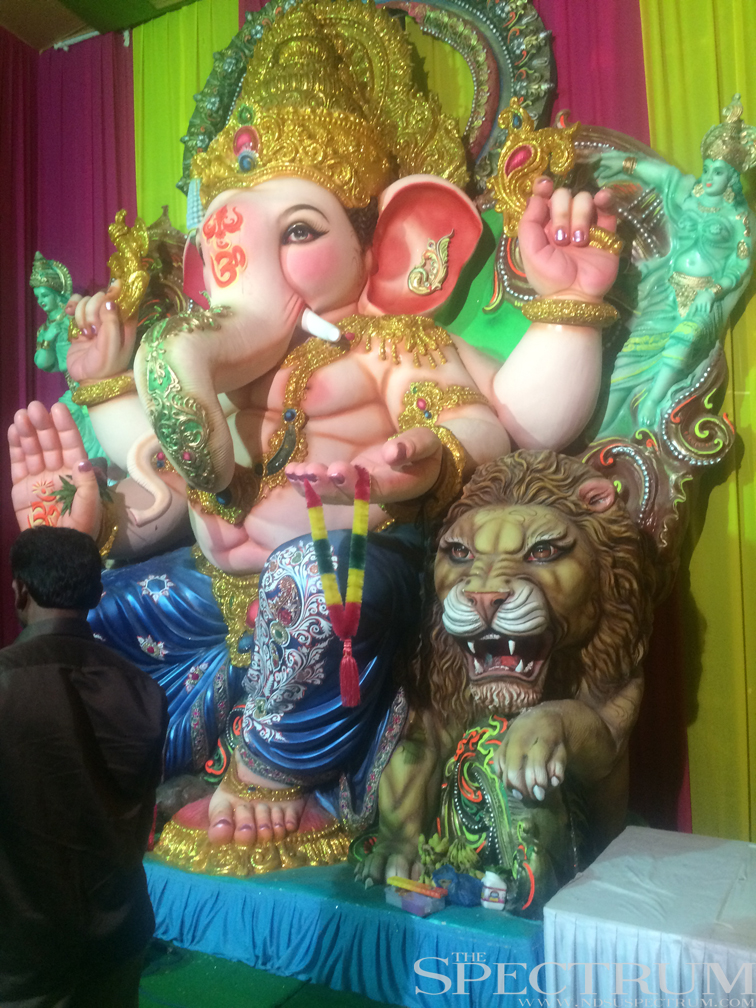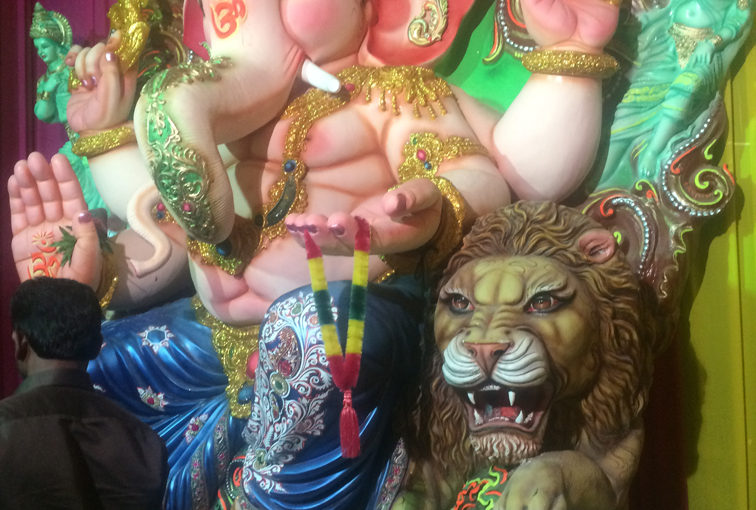Growing up in a Catholic household I remember many Ash Wednesday masses. The hymns we always sang, the feeling of community, and the palm ash cross on my forehead reminding me “you are dust and to dust you shall return.”

A large statue of Ganesh constructed for the Ganesh Cathurthi festival.
When I left for India I never imagined I would experience a festival that in some ways paralleled my experiences with Ash Wednesday back in small town North Dakota.
September 5 marked the start of Ganesh Chaturthi, a 10 day festival celebrating the elephant-headed Hindu god, Lord Ganesh, in order to ensure a year of overcoming life’s obstacles.
As part of this festival, colorful idols are created and brought into homes or placed outside in a communal area. The festivities culminate with the immersion of the idols in water on the last day of the festival. In Hyderabad, this is usually done in Hussain Sagar, the large lake separating the twin cities of Secunderabad and Hyderabad.
The symbolism behind this act is similar to Ash Wednesday’s palm ash crosses. It is a reminder that you are destined to return to the earth one day, as your body is only a vessel for your soul in this life- “you are ashes and to ashes you shall return.”
By mid-August, I saw Ganesh idols of all shapes and sizes being made all over the city. Most are made of papier-mâché and plaster of paris, but there are also the more eco-friendly clay idols. Regardless of the material, they are all elaborately decorated and brightly colored.
As the start of the festival approached, huge idols up to 20 feet tall and protected by bamboo and blue tarp awnings could be glimpsed from the road. While a 20 ft. tall idol is impressive, if not an imposing presence, last year’s idols were even taller.
Due to construction throughout the city this year, any idols taller than 20 feet risked not being able to clear the scaffolding.
During the evening of the first day of the festival, the idols are worshipped and offerings of food are made. A ceremony called an Aarti, where an oil flame is symbolically circled in front of the idol by all in attendance, is completed while singing a devotional song in praise of Lord Ganesh.
After the Aarti, a small portion of a sweet called prasad is distributed amongst all in attendance. The sense of community and familiarity of devotional songs were points where I could see that this festival paralleled my experiences with Ash Wednesday back home.
Ganesh Chaturthi if nothing else, is a time to be humble with your own mortality, generous to others, and realize that we are all not as different as we sometimes believe.
